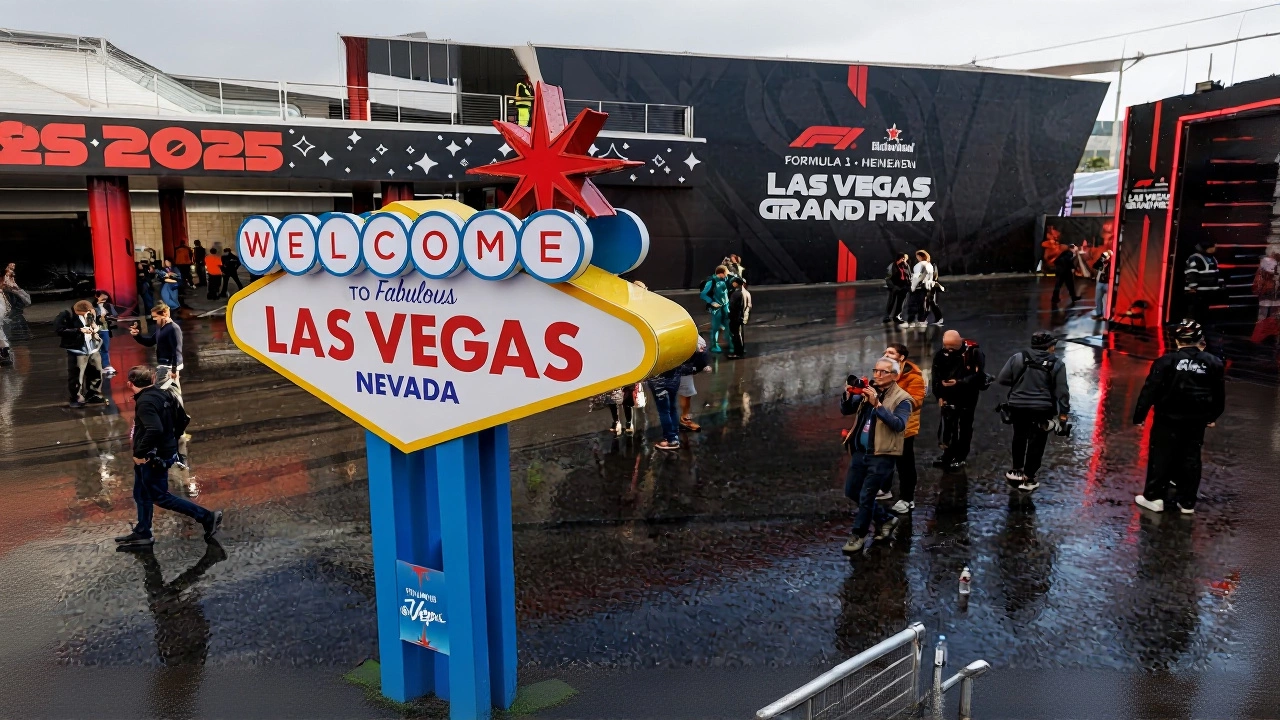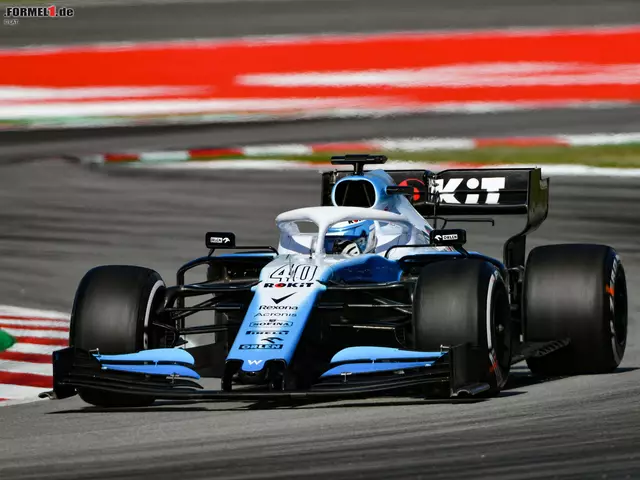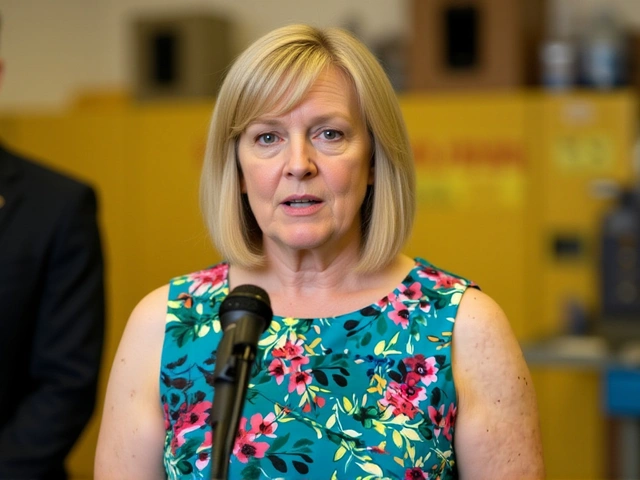Just when it seemed the Formula 1 Las Vegas Grand Prix might be drowned out by the elements, the skies cleared — literally. After two days of torrential rain that flooded streets, shut down parking garages, and triggered a dramatic red flag during practice, the 2025 Formula 1 Las Vegas Grand Prix is set to roll on Saturday, November 22, 2025, on the Las Vegas Strip Circuit under perfect, dry conditions. The National Weather Service Las Vegas confirmed no precipitation is expected, with a high of 64°F and a low of 49°F, and clouds slowly breaking up by race time. It’s a dramatic turnaround from November 19–20, when Las Vegas received 0.92 inches of rain — more than triple its entire November average. For a city that typically sees less than 0.3 inches of rain in the whole month, this was a meteorological anomaly with real consequences.
When the Desert Flooded
It didn’t take much to turn the Strip into a river. The city’s infrastructure, built for arid conditions, isn’t designed for heavy runoff. On Monday, November 18, water pooled in the parking garage of the Linq Hotel and Casino, trapping vehicles. By Tuesday, the deluge had reached the racetrack. During a high-speed practice session, a car passed over a manhole cover that had been loosened by underground water pressure. The cover shot up like a trapdoor, forcing an immediate red flag. Kym Illman of Getty Images captured the moment: a gaping hole in the asphalt, water swirling beneath, and drivers pulling off the track in confusion. Safety crews scrambled. Teams were left with barely any dry-weather data — a nightmare for setups tuned for dry tarmac.
Forecast Turns Favorable — But Too Late for Practice
By Wednesday, meteorologists at AccuWeather were confident: showers would taper off by Friday afternoon. The National Weather Service Las Vegas echoed the sentiment, predicting a dry weekend. Kevin J. Barr, a veteran reporter with the Las Vegas Review-Journal, summed it up bluntly: “Racers will be driving down The Strip with a high of 64 degrees, and an overnight low of 49 degrees with dissipating clouds.” The twist? Teams that rely on telemetry and tire wear models from dry sessions now have to guess. “It’s like showing up to a chess tournament and only being allowed to play one game — and it rained halfway through,” said one anonymous engineer from a mid-tier team.

Who’s on the Pole — and Who’s at a Disadvantage
Despite the chaos, Lando Norris of McLaren secured pole position, edging out Max Verstappen by 0.18 seconds in qualifying on Friday. But here’s the catch: Norris’s lap was set in damp conditions. Verstappen, who’s won five of the last seven races, admitted he’s flying blind. “You can’t simulate what you haven’t experienced,” he said after practice. “The grip levels are unknown. The track surface is still wet in places. We’re making it up as we go.”
That’s a problem for every team. Normally, teams spend 12 hours a day analyzing tire degradation and aerodynamic balance on dry tracks. This year, they had maybe four. The Formula 1 stewards even extended the warm-up session on Saturday morning — an unprecedented move — to give drivers a final chance to feel the track.
Why This Matters Beyond the Track
The flooding wasn’t just a motorsports headache — it exposed deeper vulnerabilities. Las Vegas, a city built on concrete and casinos, has no real stormwater infrastructure. When 0.92 inches of rain fell in 48 hours, it overwhelmed drains designed for 0.2 inches. Emergency services responded to over 200 flood-related calls. The city’s mayor, Carolyn Goodman, called it “a wake-up call.”
For Formula 1, the event is a $250 million economic engine for the city. But if weather continues to disrupt it, sponsors and broadcasters may question its reliability. The 2023 and 2024 editions were pristine — dry, dazzling, and drama-free. This year? A chaotic prelude. The question isn’t just who wins the race — it’s whether Las Vegas can sustain this event long-term without investing in drainage.

What Comes Next
Post-race, the forecast is clear: Sunday, November 23, will be sunny with a high of 65°F. Monday and Tuesday will hover around 64°F. No more rain for at least a week, according to the National Weather Service Las Vegas. But the real story lies ahead. The FIA and Las Vegas organizers are already meeting to discuss infrastructure upgrades — including new drainage grates, pressure sensors under the track, and real-time flood alerts for race control. The LasVegas.GP website, which manages local logistics but doesn’t control F1 licensing, quietly updated its advisory: “Check Windy app daily. Weather here doesn’t follow the script.”
For fans, it’s been a wild ride. For drivers, a test of adaptability. For the city, a reminder: even in the desert, water is the ultimate wildcard.
Frequently Asked Questions
How unusual was the rainfall before the 2025 Las Vegas F1 Grand Prix?
The 0.92 inches of rain recorded on November 19–20, 2025, was more than triple Las Vegas’s historical November average of about 0.25 inches. Such heavy rainfall in a 48-hour window is a once-in-25-year event for the region. The National Weather Service noted that the city’s paved surfaces and limited drainage make even minor storms dangerous.
Why did the manhole cover come loose during practice?
Underground water pressure from the flash flooding weakened the seal around the manhole cover. When a Formula 1 car passed over it at over 180 mph, the aerodynamic downforce and vibration dislodged it entirely. This is rare — such incidents are usually tied to poor maintenance, but here, the floodwaters were the primary cause.
How did the weather affect Lando Norris’s pole position?
Norris’s pole lap was set on a damp track during Friday’s qualifying session — not the dry conditions expected for race day. That means his setup was optimized for low grip, not the anticipated dry track. While he still qualified fastest, his team lacks data on how the car will behave under full dry conditions, making race strategy unpredictable.
Is the Las Vegas Grand Prix at risk of being moved due to weather?
Not immediately. F1 has committed to Las Vegas through 2030. But the 2025 disruptions have triggered emergency talks between the FIA, city officials, and the race promoter. Long-term, the event may need to shift to early December for more stable weather — or require $100 million in infrastructure upgrades to handle extreme rain events.
What’s the Windy app, and why is it recommended for racegoers?
The Windy app is a hyperlocal weather platform that uses real-time satellite and radar data to predict microclimate shifts — especially useful in desert cities like Las Vegas, where weather can vary block by block. The LasVegas.GP site recommends it because traditional forecasts often miss localized storms or sudden wind shifts that could impact track conditions.
Will the flooding impact future Las Vegas Grand Prix events?
Almost certainly. City engineers are now reviewing every manhole, drain, and culvert along the 3.8-mile circuit. A $40 million infrastructure upgrade is under consideration, including smart drainage sensors and emergency flood gates. Without these, future races could face similar disruptions — and with climate models predicting more intense desert storms, the risk is growing.








